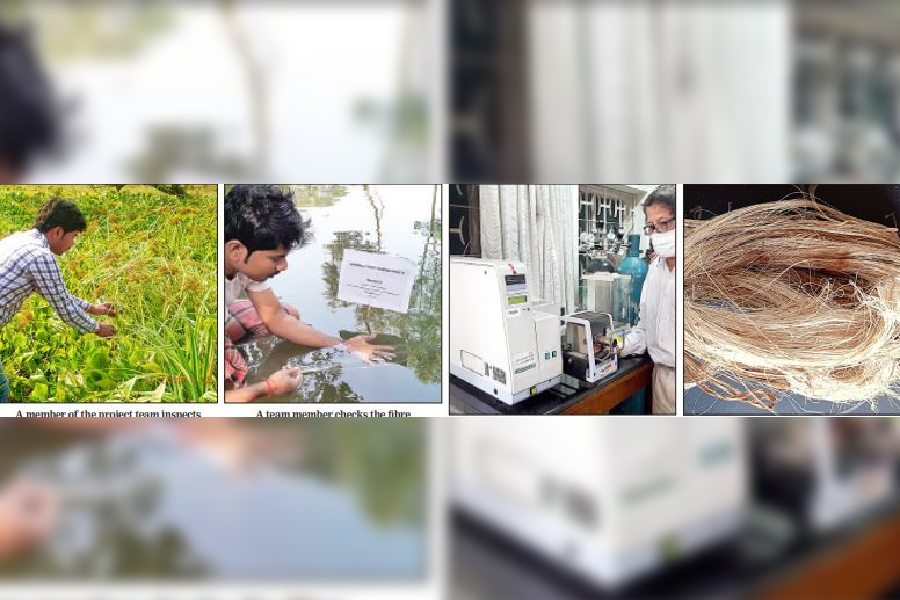A discovery by a team of researchers from Bengal that promises to revolutionise the mat-weaving industry has been published in the prestigious British science journal Nature.
The research was on a kind of grass called Cyperus platystylis.
“The mat industry has traditionally used fibre of the Cyperus pangouri sedge (madur kathi),” said Amal Kumar Mondal, a professor at the department of botany and forestry, plant taxonomy, biosystematics and molecular taxonomy laboratory, Vidyasagar University.
Sedge is a grass-like plant.
“But we have discovered another sedge, Cyperus platystylis, which is stronger, of superior quality and enhanced longevity. It has the potential to revolutionise the mat-weaving industry,” said Mondal.
Vidyasagar University is in West Midnapore, a district famous for producing mats.
“Getting published in Nature is of immense significance. Our study will now draw global attention. Leading industrialists and agriculturists cantry out the new sedge,” he said.
Mondal was assisted by Sanjukta Mandal Parui, head and co-ordinator of the zoology department of Lady Brabourne College, and Anup Kumar Bhuiya and Dheeman Mandal, research scholars in Vidyasagar University.
The team used the instrumentation centre at IIT Kharagpur for their research.
In 2010, the team had begun studying the madur kathi and gradually diversified into 10 other similar sedges before zeroing in on Cyperus platystylis.
“We cut their stems, immersed them in fresh water for a couple of months and watched their tissues melt away. The remaining fibre we took to the laboratory to test,” Mondal said.
“The mat industry is so profitable that many farmers in Midnapore have shifted from growing paddy to madur kathi. Cyperus platystylis grows in marshy land, like the traditional one, and involves roughly the same cost and requirements. It won’t be difficult for farmers to switch to Cyperus platystylis and this can boost the cottage industry.”
However, word has to spread. At present, awareness of this grass is so low that it does not have a common Bengali name.
This is where Nature comes in. Founded in 1869, the peer-reviewed science journal features discoveries that are of interest to the scientific community. It accepts only about eight per cent of the papers it receives.
“It was difficult to get accepted,” said Mondal.
“We applied in February. They got our claims verified seven times by experts around the world, sending us to the IIT lab everytime to conduct more experiments and prove the novelty of this fibre,”he said.
Since the publication on June 15, the team has been getting numerous congratulatory calls, but the researchers are not resting on their laurels.
The rhizome (underground stem) of this plant releases a fragrance, which the team will now try to isolate to find out whether it can be used in the perfume industry.
“But our foremost task is to apply on behalf of Vidyasagar University for a patent on this grass. More research can then continue,” Mondal said.
